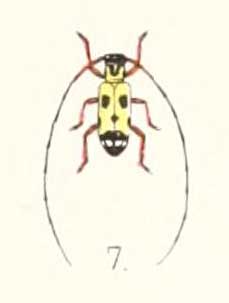
The gray bat once flourished in caves all over the southeastern United States, but due to human disturbance, gray bat populations declined severely during the early and mid portion of the 20th century. At one cave alone, the Georgetown Cave in northwestern Alabama, populations declined from 150,000 gray bats to 10,000 by 1969. 95% of gray bats now only roost in 9 caves. M. grisescens has been listed as federally endangered by the U.S. Fish and Wildlife Service since 1976, and is protected under the Endangered Species Act. Gray bat populations were estimated at approximately 2 million bats around the time they were placed on the Endangered Species list. By the early 1980s populations of gray bats dropped to 1.6 million. With conservation efforts in place, in 2002, gray bat populations were estimated to have reached 2.3 million.

Epipsilia grisescens is a moth of the family Noctuidae. It is found in Fennoscandia, Denmark as well as the Pyrenees, Alps, Apennines, Balkans and Carpathians. In the Alps it is found up to 2,000 meters.
Chariesthes is a genus of longhorn beetles of the subfamily Lamiinae, containing the following species:

Chariesthes bella is a species of longhorn beetles of the subfamily Lamiinae. It is found in Africa.

Chariesthes freya is a species of beetle in the family Cerambycidae. It was described by Jordan in 1894. It is known from the Ivory Coast, Gabon, the Republic of the Congo, and the Democratic Republic of the Congo. It contains the varietas Chariesthes freya var. itzingeri.
Chariesthes donovani is a species of beetle in the family Cerambycidae. It was described by Jordan in 1903, originally under the genus Hapheniastus. It is known from Sierra Leone, Cameroon, Ivory Coast, Gabon, Benin, Ghana, and Togo. It measures approximately 10 mm (0.39 in).
Chariesthes basiflavipennis is a species of beetle in the family Cerambycidae. It was described by Stephan von Breuning in 1938. It is known from Kenya.
Chariesthes insularis is a species of beetle in the family Cerambycidae. It was described by Stephan von Breuning in 1939. It is known from Príncipe.
Chariesthes kochi is a species of beetle in the family Cerambycidae. It was described by Stephan von Breuning in 1962. It is known from Somalia.
Chariesthes leonensis is a species of beetle in the family Cerambycidae. It was described by Stephan von Breuning in 1939. It is known from Liberia, Senegal, the Ivory Coast, Guinea, and Sierra Leone.
Chariesthes pulchelloides is a species of beetle in the family Cerambycidae. It was described by Stephan von Breuning in 1939. It is known from the Democratic Republic of the Congo.
Chariesthes ruficollis is a species of beetle in the family Cerambycidae. It was described by Stephan von Breuning in 1942. It is known from Somalia.
Chariesthes schatzmayri is a species of beetle in the family Cerambycidae. It was described by Stephan von Breuning in 1940. It is known from Kenya and Somalia.
Chariesthes trivitticollis is a species of beetle in the family Cerambycidae. It was described by Stephan von Breuning in 1977. It is known from Cameroon.
Chariesthes fairmairei is a species of beetle in the family Cerambycidae. It was described by Per Olof Christopher Aurivillius in 1922, originally under the genus Hapheniastus. It is known from the Central African Republic and Gabon.
Chariesthes maublanci is a species of beetle in the family Cerambycidae. It was described by Lepesme and Stephan von Breuning in 1950. It is known from Gabon.
Chariesthes rubida is a species of beetle in the family Cerambycidae. It was described by Chevrolat in 1855, originally under the genus Mesosa. It is known from the Democratic Republic of the Congo, the Central African Republic, Cameroon, Equatorial Guinea, Nigeria, and Gabon. It contains the varietas Chariesthes rubida var. femoralis.
Chariesthes laetula is a species of beetle in the family Cerambycidae. It was described by Péringuey in 1899, originally under the genus Tragiscoschema. It is known from Tanzania, Mozambique and Zimbabwe.
Chariesthes obscura is a species of beetle in the family Cerambycidae. It was described by Charles Joseph Gahan in 1890, originally under the genus Phymasterna. It has a wide distribution in Africa.
Chariesthes rubra is a species of beetle in the family Cerambycidae. It was described by Hintz in 1912, originally under the genus Apheniastus. It is known from Cameroon and the Central African Republic.






